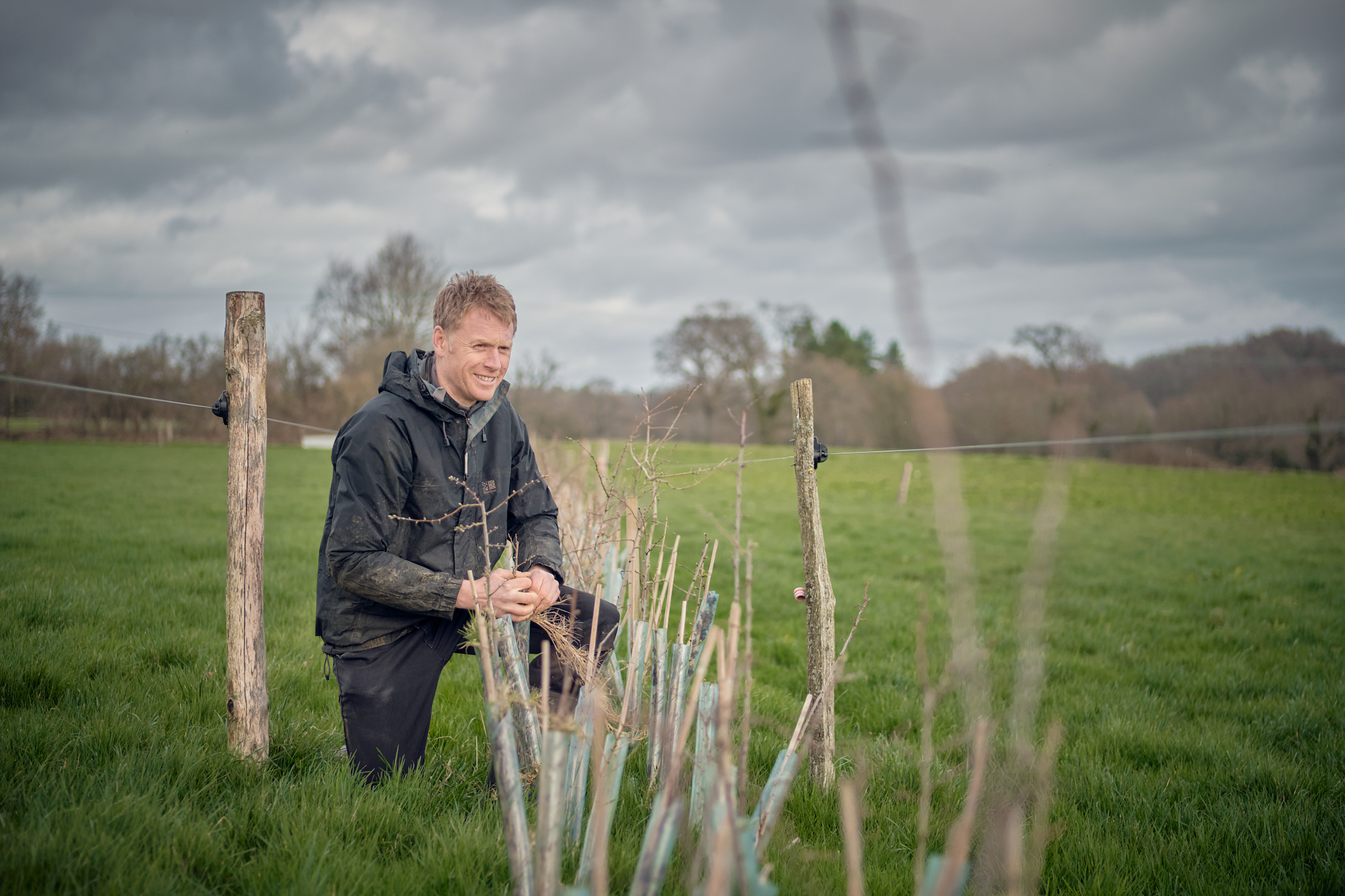- Home
- Reaping rewards from a regenerative approach
Reaping rewards from a regenerative approach
Creating a resilient and sustainable business is more than just a passion for Dan Burdett; it is a core belief that is driving development on Cockhaise Farm in Sussex.
Dan’s father paved the way for innovation, converting the farm to organic production in 1999. Inspired by a trip to New Zealand, coupled with a frustration about ‘prescriptive agriculture’, there was clear business sense behind the decision, with significant financial rewards.
These business skills are still evident in the management of both the farm and the herd today. Returning to farming 12 years ago, Dan initially pursued a career in sales and marketing in London; knowledge he has brought with him. And as part of AHDB’s Strategic Dairy Farm programme, he’s looking forward to inviting farmers and experts to Cockhaise to share knowledge and learn from the experience of others.
The family now farm 300ha with a flexible grazing platform of between 75-120 hectares depending on the time of year and grass growth. Their autumn calving herd of 240 Holstein Friesians achieve a tight block with 95% of cows calving within a six-week window.
Milk is processed by Arla and they currently produce 6,000 litres of milk per cow per year. With a focus on maximising yield from forage, they aim to increase this to 6,500 litres. “In a normal year we would be grazing from the middle of February to the end of October. During the winter months we are on self-feed silage, predominantly grass, with some whole crop silage. We feed concentrate through the parlour, up to about seven kilos during the winter,” says Dan.
A regenerative model
Following in his father’s footsteps, Dan continues to bring innovation to the farm. While he would not describe himself as a regenerative farmer, he is keen to adopt many of those practices.
“Regenerative agriculture is a broad-brush approach to farming. It is about looking at improving the health of soils, the lives of the people around the farm, and the economics of the business,” explains Dan.
“We want to create soil which is healthier and has a more vibrant eco-system in it. We want more resilience in the grazing system. The water that comes through the farm comes out a lot cleaner and we’ve got a higher level of ecology with biodiversity.”
Recently, Dan completed a Nuffield Scholarship on this topic, and, like his father, he has been inspired by the travelling opportunities given to him. “The people I met were farming in a way they wanted to farm, in a way they believed was right. They didn’t want to be constricted by being organic, they were willing to try new things and fail. It’s pretty inspirational when you meet people like that.”
Improving the land
Dan’s approach recognises the importance of both the cows and the land. This year, they have planted silvopasture, a practice that integrates trees and forage with grazing animals.
“We planted trees on a four-acre paddock in February. We have put cactus guards round them which have been great. Most people fence them off and put them in tree lanes, but cows tend to walk up and down fence lines so this would end up creating highways,” says Dan.
“Soil in fields is generally bacterially driven and we want to create more mycorrhizal fungi networks, a sort of superhighway under the soil. The trees will really help with this and will create some shade and shelter for the cows as well as something for them to browse on.”
Ultimately, this will help increase the resilience of the land grazed by the herd. “If it becomes more robust and grows through a drought, we have grass when we might not otherwise. If we don’t have to reseed it as often, then we don’t have to plough it up. Cows will self-medicate so it’s giving them the opportunity to eat plants other than rye grass. It’s about looking at the system as a whole.”
This is a natural progression for Dan after his decision to adopt herbal leys seven years ago. “Nothing in nature exists in a monoculture. Root systems interact with one another and variety helps to stimulate more resilience and feed the microorganisms in the soil. Sometimes cows go into these leys and the milk might take a bit of a hit depending on the composition of the leys. But we found we were growing more grass and we had more in front of the cows. Anything we re-seed now goes into an herbal ley,” explains Dan.
A profitable and sustainable business
Dan’s team are at the heart of his business model and he is passionate about providing them with opportunities while ensuring overall sustainability. Following a regenerative approach can take Dan’s attention away from the day-to-day running of the farm so it is important that he has the right people in place.
“I’ve learnt that I can’t do everything. I enjoy milking the cows, but I know if I’m around too much I’m just going to get overly involved. I don’t tell the team which cows to foot trim, I don’t choose the bulls. I set up the basic structure of how they should work and I monitor what they are doing. People thrive in the right environment.
“I don’t want to do anything that I can’t afford to lose money on, so we start small scale. I want to do it so I can walk away from it and I haven’t lost anything.”
For those interested in regenerative agriculture, Dan’s advice is simple. “Just be curious. Decide what it is you want to do and why you are doing it. Write it down, talk to your family about it, talk to your staff about it and bring someone along with you on that journey.”


